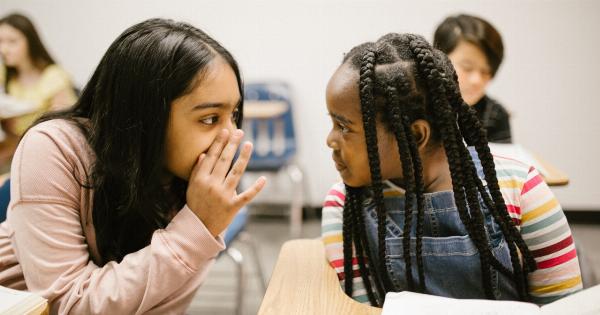Assessments are an important tool to understand a child’s academic and developmental progress. It is crucial to assess children at a young age to identify any learning or developmental challenges.
Early assessment and intervention can help children overcome any obstacles they may face in their academic journey. In this article, we will discuss the different types of assessments that are essential for young children.
Developmental Assessment
Developmental assessment is critical to identify a child’s developmental delays. This assessment aims to measure cognitive, language, motor, and social-emotional skills.
It helps to identify if a child is meeting developmental milestones, and if not, identifies the type and extent of the delay.
For instance, if a child is not speaking at the age of two, developmental assessment can help to identify why. The evaluator can assess if the child has a hearing problem or if there is a cognitive or behavioral issue that is causing the delay.
Early identification of a delay can lead to early intervention and increase the chances of success for the child.
Standardized Tests
Standardized tests are an essential part of a child’s academic journey. These tests measure a student’s academic progress compared to other students in their grade level.
Standardized tests are usually multiple-choice tests that assess a child’s reading, math, and writing skills. It is an objective way to measure student achievement, and the results can help to identify strengths and weaknesses in a student’s academic progress.
Standardized tests can be administered several times throughout a school year to track a student’s academic progress.
The results can help teachers to differentiate instruction and provide targeted help to students who are struggling in specific areas.
Teacher Observation
Teacher observation is an essential tool for assessing a child’s academic progress and behavior. Teachers observe students regularly and take notes on their academic and social progress.
These observations can help teachers to identify if a child is struggling in school and determine the best course of action to support the student.
Teacher observation is especially important for young children who may not have developed the necessary language and communication skills to express their needs and challenges.
Teachers can observe a child’s actions and behaviors to understand their needs better and provide appropriate support.
Behavioral Assessment
Behavioral assessment is another tool to evaluate a child’s behavior in school. This assessment can help to identify if a child is struggling with attention, hyperactivity, or impulsivity issues.
Behavioral assessment can also help to identify if a child is displaying symptoms of anxiety or depression, which can impact their academic progress.
Behavioral assessment can help to identify the root cause of a child’s behavior, which can be caused by several factors, such as trauma, home environment, or learning disabilities.
Once the reason is identified, teachers can provide appropriate support to help the child overcome these challenges.
Diagnostic Assessment
Diagnostic assessment is a tool to identify a child’s strengths and weaknesses in specific academic domains. This assessment can help teachers to identify a student’s academic skills, knowledge, and understanding of a particular subject.
Diagnostic assessment can help teachers to create a targeted teaching plan that can help a student improve their understanding of a subject and improve their overall academic progress.
Diagnostic assessment is often used to evaluate a student’s reading and math skills, which are the foundational skills in academics. Identifying and addressing any gaps in these skills can improve a child’s overall academic progress.
Portfolio Assessment
Portfolio assessment is a type of assessment that uses a collection of student work as evidence of learning progress. This assessment measures a child’s academic progress and development over time.
It allows teachers to evaluate a child’s work and provide feedback on areas that need improvement. Portfolio assessment is often used in conjunction with other assessments to provide a comprehensive evaluation of a child’s academic progress.
Portfolio assessment can help children to take ownership of their work and can provide them with an opportunity to reflect on their learning journey.
It can also help parents to understand their child’s academic strengths and weaknesses and work with teachers to provide appropriate support.
Progress Monitoring
Progress monitoring is an ongoing assessment that measures a child’s academic progress throughout the school year.
This assessment is usually administered several times a year and provides teachers with a snapshot of a student’s academic progress. This assessment can help teachers to identify if a student is making adequate progress in their academic journey.
Progress monitoring is often used in conjunction with targeted interventions to help students who are struggling academically.
The assessments provide teachers with data that helps them to adjust their teaching strategies to support individual student needs.
Formative Assessment
Formative assessment is a type of assessment that measures a child’s academic progress during the learning process. This assessment provides teachers with real-time data on a student’s understanding of a particular subject.
This assessment allows teachers to adjust their teaching strategies to address any gaps in a student’s understanding of a concept.
Formative assessment can take many forms, such as questioning, quizzes, discussion, and peer assessment. This assessment provides teachers with data that can help to improve a student’s overall academic progress.
Summative Assessment
Summative assessment is a type of assessment that measures a child’s academic progress at the end of a particular lesson, unit, or semester.
This assessment provides teachers with data that can help to evaluate a student’s overall understanding of a subject. Summative assessment often takes the form of tests, exams, or projects.
Summative assessment is used to determine whether a student has met learning objectives. Teachers can use this assessment to identify areas where students need further support or to determine if a student needs additional enrichment opportunities.
Conclusion
Assessment is an essential part of a child’s academic and developmental journey.
A comprehensive assessment program that includes developmental assessment, standardized tests, teacher observation, behavioral assessment, diagnostic assessment, portfolio assessment, progress monitoring, formative assessment, and summative assessment can help to identify a child’s strengths and weaknesses and provide the necessary support to improve their overall academic and developmental progress.






























